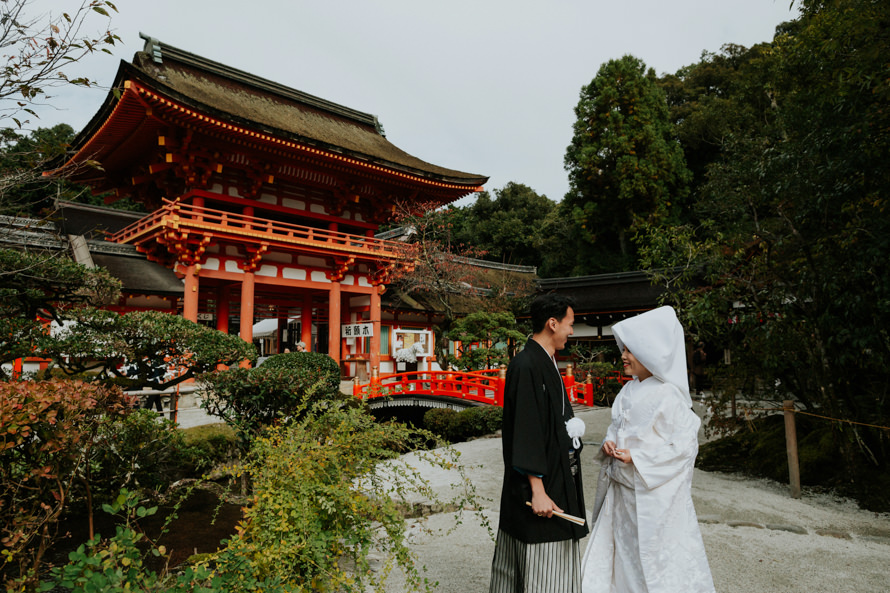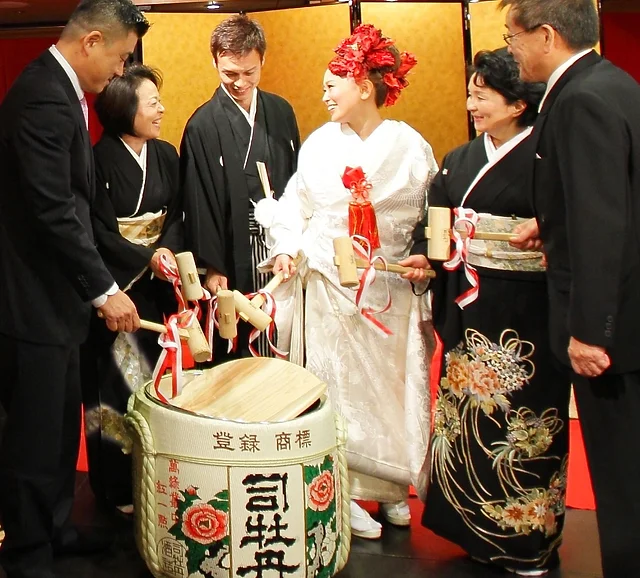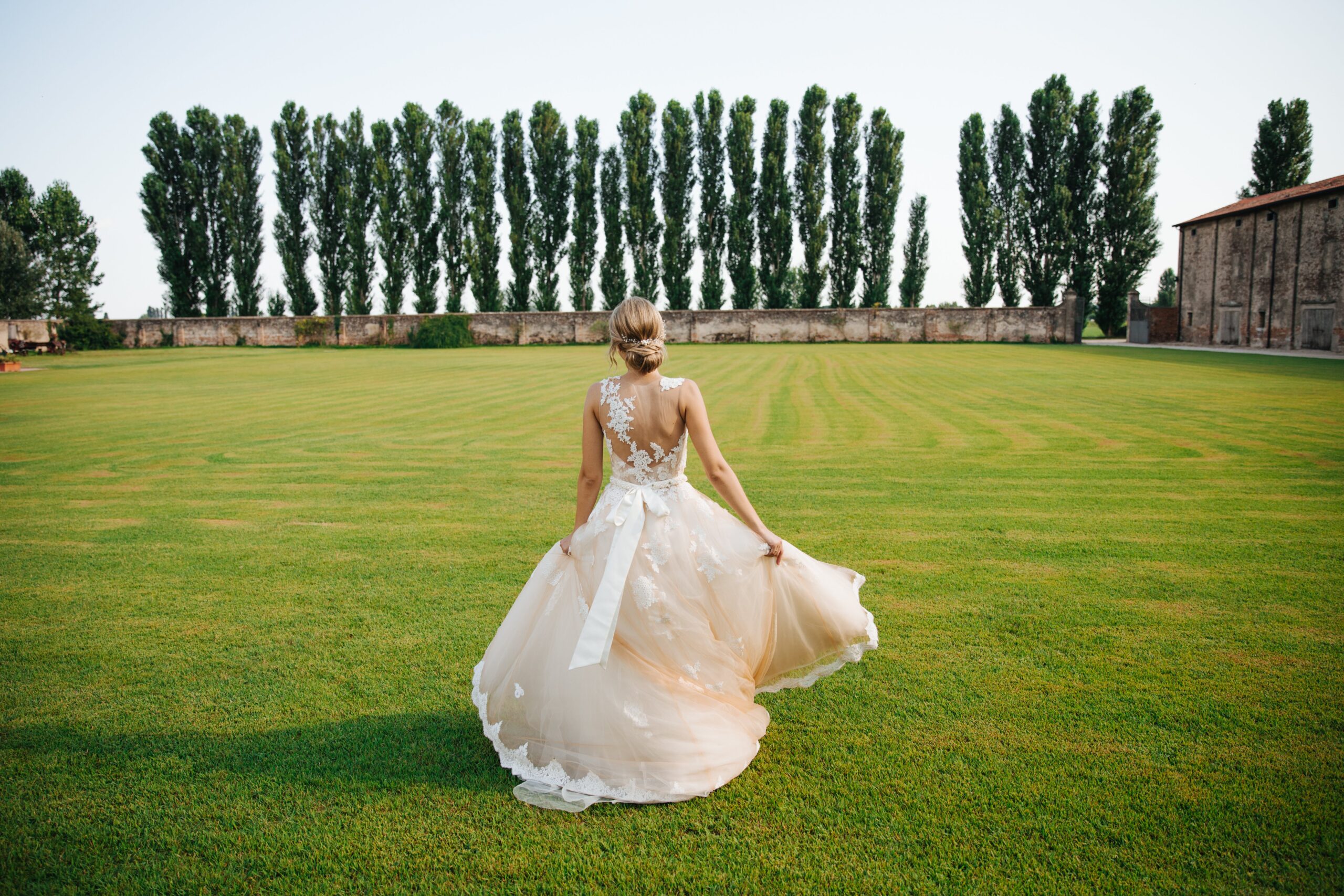Traditional Japanese weddings are steeped in rich cultural traditions and ceremonies that have been passed down for centuries. While modern Japanese weddings often incorporate elements from Western-style ceremonies, some couples still choose to have a more traditional wedding. Here's an overview of the content you might find in a traditional Japanese wedding
Japanese Wedding Shinto Ceremony:
The Shinto ceremony is the traditional Japanese wedding ceremony, held at a Shinto shrine. Shinto is the indigenous religion of Japan, and its ceremonies are deeply ingrained in Japanese culture. The ceremony is usually performed by a Shinto priest and involves rituals to purify the couple and bless their union. Before entering the sacred space of the shrine, the couple, along with their parents and sometimes close family members, participate in a purification ritual. The Shinto wedding ceremony is a beautiful and sacred event that reflects the deep spiritual and cultural significance of marriage in Japan. It emphasizes the importance of family, unity, and respect for tradition.

Shinto Shrine:
The ceremony takes place at a Shinto shrine, which is a sacred place in Japan. The couple, along with their families and guests, will gather at the shrine to witness the wedding. The natural surroundings and peaceful atmosphere of the shrines create a serene setting for the wedding ceremony. Shinto shrines are popular for traditional weddings, some modern couples opt for a mix of Shinto and Western-style ceremonies. Additionally, not all Japanese weddings are held at shrines; some choose other venues like hotels, banquet halls, or chapels. Nevertheless, Shinto shrines remain a powerful symbol of tradition, spirituality, and cultural identity in Japanese weddings.

Shinzen Shiki (Shrine Ritual):
The ceremony begins with a purification ritual called “Shinzen Shiki,” where the couple and their parents cleanse their hands and mouths with water to purify themselves before entering the sacred space. The term “Shinzen Shiki” can be translated to “shrine purification ritual.” It involves the act of purifying oneself by washing the hands and mouth with water before entering the sacred space of the Shinto shrine. This act symbolizes the desire for a pure heart and mind before approaching the Shinto deities. While performing the Shinzen Shiki, participants may also offer silent prayers or intentions for the success of the japanese wedding, a harmonious marriage, and blessings for their future together.

Japanese Wedding San-san-kudo:
One of the essential components of a traditional Japanese wedding is the exchange of nuptial cups called “San-san-kudo.” During this ritual, the couple takes three sips each from three different cups of sake, symbolizing their union and the family's bond. The groom sips from the first cup, the bride from the second, and they both sip from the third. “San-san-kudo” translates to “three-three-nine times” in English. The “three” refers to the three sets of three sips each, and “nine” represents the three sets repeated three times. It symbolizes the couple's unity, the merging of their families, and the beginning of their life together as one.

Ritual Bowing:
Throughout the ceremony, the couple and their parents will bow as a sign of respect and gratitude to the Shinto deities and to each other. Bowing is an integral part of Shinto rituals and ceremonies, as it is a way to show reverence and respect to the Shinto deities believed to reside in the shrine. By bowing, the couple and their families demonstrate their acknowledgment of the spiritual significance of the ceremony and their desire to seek blessings from the divine. Bowing is deeply ingrained in Japanese culture, and it plays a significant role in various aspects of life, including weddings.

Offerings:
Offerings such as rice, fruits, and other symbolic items are made to the Shinto deities to seek their blessings for a harmonious and fruitful marriage. The offerings presented at the Shinto shrine hold symbolic significance. They represent gratitude for the blessings of nature, prosperity, and the abundance of life. The act of offering these items is a way of showing appreciation for the harmony and balance that the deities bring to the world.

Kagami Biraki:
At the end of the ceremony, a ceremonial sake barrel is opened with wooden mallets, and guests are served sake to celebrate the couple's union. Kagami Biraki translates to “opening the mirror,” but in the context of a wedding, it refers to “breaking open the sake barrel.” The act of breaking open the barrel symbolizes the opening of new beginnings and the start of a harmonious and prosperous life for the newly married couple. Kagami Biraki is not limited to weddings; it is a custom observed in various celebratory events in Japan, including business gatherings, festivals, and New Year celebrations.

Attire:
The bride typically wears a traditional white kimono called “shiro-muku” or a colorful kimono called “iro-uchikake.” The groom wears a kimono called “montsuki” along with hakama trousers. The “shiro-muku” is a pure white kimono, symbolizing purity and the beginning of a new life. It is the most common choice for a traditional Japanese bride. The white color represents the bride's willingness to be a blank canvas, ready to take on her new role as a wife and embody the virtues of a traditional Japanese woman. Both the bride's and groom's attire showcase the beauty of traditional Japanese textiles and craftsmanship.

Reception:
After the Shinto ceremony, there may be a reception or banquet where guests enjoy a meal and celebrate the couple's union. The reception is a time for celebration, sharing joy, and expressing gratitude to all those who have come to support and bless the newlyweds. It allows the couple to bond with their loved ones and create lasting memories of their wedding day. The combination of traditional customs, delicious food, entertainment, and the company of cherished guests makes the reception a truly unforgettable experience.

Traditional Japanese weddings have a specific structure, many couples these days choose to incorporate elements from both Japanese and Western cultures to create a unique and personalized wedding experience.











